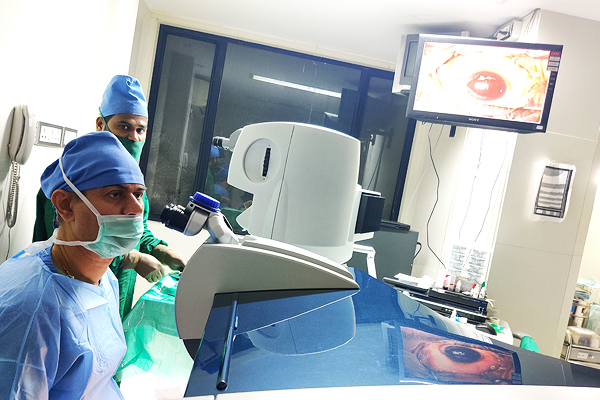While contemplating laser eye surgery in Modesto, which process comes to mind? If it’s LASIK, you’re not alone! Lasik surgery in Modesto is one of the most renowned refractive surgeries available. But LASIK isn’t the only option out there! Revolutions in laser technology have had a massive impact on medical care, and the maximum impact has been observed in the types of refractive eye surgeries.
A fundamental evaluation is needed to ascertain which of these 5 procedures is right for you. However, the primary assessment involves thorough testing & measurement of your eyes, along with a detailed discussion with a vision correction surgeon about your lifestyle preferences and visual objectives. Let’s start with the 5 types of laser eye surgeries without any further ado!
- LASIK Eye Surgery – LASIK, aka laser-assisted in-situ keratomileusis, is a typical laser eye surgery that is common for curing several conditions, for example, myopia, hyperopia, and astigmatism. This is the most prominent type of eye surgery utilizing a femtosecond laser to change the corneal tissue in the original lens to bolster patient eyesight. Many individuals in Modesto opt for LASIK to replace glasses or contact lenses.
- Refractive Lens Exchange – RLE is a leading eye surgery for people dealing with the effects of presbyopia, an ordinary age-related condition leading to the maximum loss of near vision before growing into a cataract. During this process, your eye surgeon alters the dysfunctional natural lens with a top-notch intraocular lens catered to offer focusing power at near, far, and intermediate distances. RLE not only eradicates the glass or bifocal glass requirements but also deters cataracts from growing in the coming days.
- Intraocular Lens Surgery – If you grapple with extreme nearsightedness, IOL is another laser process worth considering. During the IOL implantation, the eye doctor’s tiny lenses inserted into the eye will be placed in front of the original lens but behind the iris. They allow light rays to appropriately focus onto the retina to generate a precise vision distance and can minimize the need for wearing contact lenses or thick glasses.
The best individuals for the IOL process might be those with a higher degree of myopia but aren’t presbyopic. They should neither have eye disease nor suffer from pupil, iris, or corneal deformities.

- PRK – It represents Photo Refractive Keratectomy, which is the best laser eye surgery procedure. Being a blade-free technique, PRK can efficiently cure myopia and astigmatism. However, PRK isn’t beneficial for moderate to high hyperopia. This technique was invented as a LASIK substitute for vision modification. PRK is done by reconstructing the cornea, similar to LASIK, but the reconstruction is done on the surface once the epithelial cells are eliminated. Once the surgery is over, a bandage contact lens is used. PRK takes 4-5 days to heal, whereas LASIK requires only 4-5 hours.
- SMILE – It represents small incision lenticule extraction, a blade-free technique employing one laser. SMILE procedure utilizes a femtosecond laser to build a lens-shaped disc of tissue within the cornea. The tissue disc is known as a “lenticule,” which is removable. The lenticule shape and size are modified to the individual’s refractive error. In the SMILE procedure, the laser eye doctor in Modesto pulls out the lenticule via a 4-5 mm incision on the cornea, and this elimination restructures and smoothes the cornea out and, therefore, fixes vision.
Conclusion
During the past 30 years, medical lasers have successfully performed optical correction surgeries for about 100 million patients and 200 million eyes. Therefore, a vision correction assessment is the best strategy for deciding which surgery is most appropriate for you.









